Ancient Secrets Of The Black Basalt Statue Of Priest Djedhor Revealed
Ellen Lloyd - AncientPages.com - Ancient Egyptians constructed sacred temples and other buildings we admire today. Excavations in the Land of the Pharaohs have brought to light splendid ancient Egyptian artifacts that we can see in museums, and we do wonder what more ancient secrets will be revealed once we learn what could be hidden beneath the sand, but that may take a long while.
For now, we should be thankful we have been given the opportunity to see what has been discovered in Egypt so far, and each artifact, building, or statute provides us with valuable knowledge about ancient Egyptian history, traditional customs, and religious beliefs.
Left: Djedhor statue in Egyptian Museum in Tahrir. Credit: Egypt Today - Right: Sarcophagus of Djedhor 200–150 B.C. Credit: Public Domain
When archaeologists entered the ancient Egyptians tombs for the first time, they saw walls were covered with mysterious symbols. It was long assumed that these writings were passages from ancient texts. However, later, when scientists discovered the secrets of hieroglyphs, they realized these ancient Egyptian texts were spells.
Ancient Egyptians did not consider death to be the end of one’s existence. In fact, death was, in their opinion the beginning of something new, and you had to be well-prepared to enter the realm of the afterlife. People believed a person “would be judged by Osiris, the god of the afterlife, the underworld, and the dead. It was important to prepare the dead bodies for eternal existence in joy and happiness.
Numerous tombs of various styles and dates containing carefully prepared bodies and a variety of funerary goods reveal ancient Egyptian belief in the afterlife, which was not the end of life but only a transition to another reality.” 1
After years of studies, scholars discovered pyramid texts charted the pharaoh’s journey into the afterlife.
“Pyramid Texts represent the oldest known collection of ancient Egyptian hieroglyphic inscriptions containing religious texts, elaborate spells (or utterances), hymns, prayers, thousands of lines of fragments of myths and legends, references to mortuary and funerary rites, historical events, festivals.” 2
Though the thoughts of the afterlife played a central part in ancient Egyptian religious beliefs, people were also troubled by daily problems, and they were convinced one could accomplish a lot with magic.
Of course, magic in ancient Egypt can not quite be compared with what we in modern days define as magic, though some practices like invoking spirits or casting spells are similar.
Magic in ancient Egypt co-existed peacefully with science and religion. Everyone resorted to magic, from the Pharaoh to the poorest person in the country. Ancient Egyptian priests were “practitioners of magic in ancient Egypt, but the people who used magic had other functions as well. Most commonly, they belonged to the priesthood.
Most Egyptian priests lived ordinary lives outside the temple walls. Read more
Full-time secular magicians probably did not exist in Egypt before the early first millennium AD and some would dispute their existence even at this period.
Judging from the amulets found in graves of the fourth millennium BC, magic was a part of Egyptian culture from the beginning. Little is known about the type of people who may have practiced magic at this period.” 3
Knowing the importance of magic in ancient Egypt, it should be surprising to learn statues, artifacts, and buildings were often covered with magical formulas.
The black-basalt statue of priest Djedhor is a remarkable piece of ancient Egyptian art. Djedhor was a royal scribe as well as a priest of Min and Hathor. Besides his name and titles, the inscription on his stone sarcophagus also mentions his mother Tikas. His entire black basalt statue is covered with mysterious symbols and magical texts. Discovered in the temple of Athribis, a city that, according to the Palermo Stone was once the capital of Lower Egypt, the black-basalt statue reminds of the significance and dangers of scorpions.
The statue is completely covered with magical texts intended to treat venomous bites of scorpions and poisonous reptiles. Ancient Egyptian priests were responsible for treating sick people and often they did this with the help of magical formulas that helped them contact divine forces in the other world.
Ancient civilizations worldwide feared and admired the scorpion. A mysterious Scorpion goddess appears under different names among many ancient cultures. She is mentioned in several myths and legends worldwide.
Goddess Serket in Egyptian mythology depicted as a scorpion. Credit: Francesco Dazzi
We encounter her in Mesopotamia, ancient Egypt, in the myths and legends of the Aztecs and Hindu people.
Ancient Egyptians worshipped Serket, the Scorpion Goddess who could heal poisonous bites and sting evildoers.
“She was depicted as a scorpion or as a scorpion with the head and torso of a woman and even as a woman with a scorpion on her head. The scorpion is a symbol that appeared on the earliest Egyptian artifacts related to the earliest human settlements to the beginning of the Early Dynastic Period around 3100 BC.
The black statue of priest Djedhor gives a unique glimpse into the religious views in ancient Egypt. Credit: Tharir Museum
In a strong association with the scorpion, which is famous for protecting its young, also Serket symbolizes the strong protection of motherhood and nurturing of children. In this aspect, she was compared to the Egyptian goddess Isis, who protected Horus from Seth, the god of chaos and, during the child's infancy.” 4
The magnificent black-basalt statue of Priest Djedhor is kept at the Egyptian Museum in Tahrir. According to the museum, the statue “dates back to the Late Era (about 323-317 BC). It bears the artistic qualities of what is known as the "Little Horus Plaques" and is considered one of its varieties.
The Little Horus Plaques appeared in the Late Era and were used for therapeutic purposes, especially for the treatment of venomous bites.” 5
Like many other ancient Egyptians objects, the black statue was believed to be under a spell. This is most likely because it is covered with so many magical texts.
Those who are interested in ancient Egyptian cosmological beliefs will find the statue of great significance. It has many mysterious carved symbols that reflect ancient Egyptians views of the stellar world that is intertwined with ours and the realm where souls eventually enter.
As for the significance of the scorpion, it's worth remembering this animal was not only associated with females. In Babylonian myths, we encounter the mysterious scorpion men known as the Aqrabuamelu.
Written by Ellen Lloyd – AncientPages.com
Copyright © AncientPages.com All rights reserved. This material may not be published, broadcast, rewritten or redistributed in whole or part without the express written permission of AncientPages.com
Expand for references- Sutherland - Death And Afterlife In Ancient Egyptian Beliefs – Death As Transition To Another Reality, AncientPages.com
- Sutherland - Pyramid Texts Of Ancient Egypt That Charted Journey Of Pharaohs Into Afterlife, AncientPages.com
- Geraldine Pinch - Magic in Ancient Egypt
- Sutherland - Serket: Scorpion Goddess Who Could Heal Poisonous Bites And Sting Evildoers, AncientPages.com
- Mustafa Marie - What you might not know about Djedhor’s black basalt statue in Egyptian Museum in Tahrir, Egypt Today
More From Ancient Pages
-
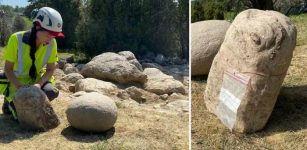 Unusual Discovery Of A Viking Age Phallic Stone In Tystberga, Sweden
Archaeology | Jun 12, 2023
Unusual Discovery Of A Viking Age Phallic Stone In Tystberga, Sweden
Archaeology | Jun 12, 2023 -
 On This Day In History: Remembering D-Day – On June 6, 1944
News | Jun 6, 2016
On This Day In History: Remembering D-Day – On June 6, 1944
News | Jun 6, 2016 -
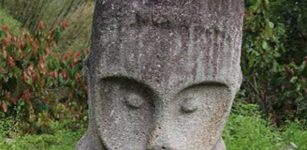 Mysterious Prehistoric Statues In Bada Valley, Indonesia Surrounded With Countless Legends
Civilizations | Jan 9, 2019
Mysterious Prehistoric Statues In Bada Valley, Indonesia Surrounded With Countless Legends
Civilizations | Jan 9, 2019 -
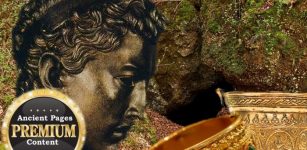 Gold Treasures Of Ancient King Discovered In North America Create Historical Problems
Civilizations | Jun 29, 2018
Gold Treasures Of Ancient King Discovered In North America Create Historical Problems
Civilizations | Jun 29, 2018 -
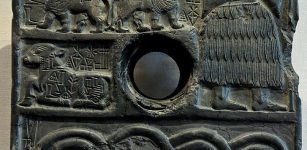 Babylonian Story Of Bird-God Anzu ‘The Wise One’ And His Underworld Realm
Featured Stories | Dec 10, 2016
Babylonian Story Of Bird-God Anzu ‘The Wise One’ And His Underworld Realm
Featured Stories | Dec 10, 2016 -
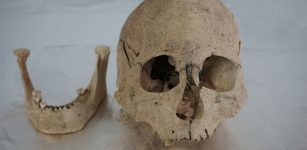 DNA Study Of Ancient Humans Sheds Light On Human Evolution On The Tibetan Plateau
Archaeology | Mar 21, 2023
DNA Study Of Ancient Humans Sheds Light On Human Evolution On The Tibetan Plateau
Archaeology | Mar 21, 2023 -
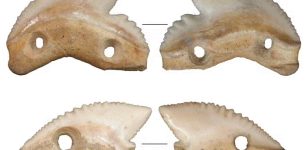 7,000-Year-Old Shark-Tooth Knives Discovered In Indonesia
Archaeology | Oct 27, 2023
7,000-Year-Old Shark-Tooth Knives Discovered In Indonesia
Archaeology | Oct 27, 2023 -
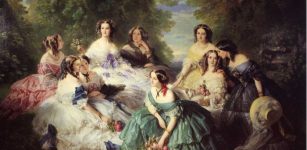 Daily Life Of A Lady In Waiting – A Dangerous Profession Sometimes
Ancient History Facts | Aug 24, 2023
Daily Life Of A Lady In Waiting – A Dangerous Profession Sometimes
Ancient History Facts | Aug 24, 2023 -
 Will Egypt be able to buy back the 4500-year-old statue of Sekhemka?
Artifacts | Aug 26, 2015
Will Egypt be able to buy back the 4500-year-old statue of Sekhemka?
Artifacts | Aug 26, 2015 -
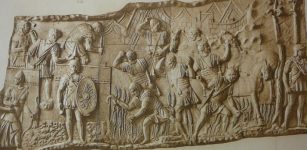 Secret Police In Ancient Rome – Frumentarii: Who Were They And What Was Their Role?
Featured Stories | Aug 12, 2019
Secret Police In Ancient Rome – Frumentarii: Who Were They And What Was Their Role?
Featured Stories | Aug 12, 2019 -
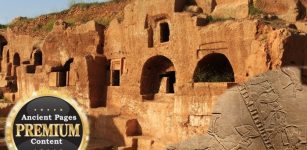 Mysterious Ancient Tomb May Contain Remains Of A Powerful Forgotten Goddess
Civilizations | Aug 30, 2018
Mysterious Ancient Tomb May Contain Remains Of A Powerful Forgotten Goddess
Civilizations | Aug 30, 2018 -
 On This Day In History: Independence Of Lower Canada – Today Quebec – Proclaimed On Feb 28, 1838
News | Feb 28, 2017
On This Day In History: Independence Of Lower Canada – Today Quebec – Proclaimed On Feb 28, 1838
News | Feb 28, 2017 -
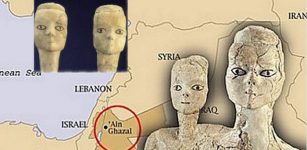 Stone Age Statues Were Taken To Britain For Restoration In 1990 – Never Returned Home To Jordan
News | Apr 6, 2021
Stone Age Statues Were Taken To Britain For Restoration In 1990 – Never Returned Home To Jordan
News | Apr 6, 2021 -
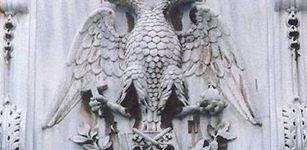 Mystery Of The Ancient Double-Headed Eagle Symbol
Ancient Symbols | Oct 11, 2017
Mystery Of The Ancient Double-Headed Eagle Symbol
Ancient Symbols | Oct 11, 2017 -
 Mysterious Hieroglyphs Point To The Location Of Queen Nefertiti’s Tomb?
Archaeology | Sep 29, 2022
Mysterious Hieroglyphs Point To The Location Of Queen Nefertiti’s Tomb?
Archaeology | Sep 29, 2022 -
 Why Are Apples So Important During Halloween?
Ancient History Facts | Oct 30, 2024
Why Are Apples So Important During Halloween?
Ancient History Facts | Oct 30, 2024 -
 Cardinal Richelieu ‘Red Eminence’ – One Of The Greatest Politicians In French History
Featured Stories | Oct 26, 2018
Cardinal Richelieu ‘Red Eminence’ – One Of The Greatest Politicians In French History
Featured Stories | Oct 26, 2018 -
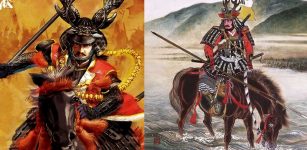 Spells And Magic Were Important To Samurai Warriors And Used In Battles
Featured Stories | Oct 7, 2017
Spells And Magic Were Important To Samurai Warriors And Used In Battles
Featured Stories | Oct 7, 2017 -
 Battle Of Himera: New Study That Contradicts Historical Accounts
News | May 24, 2021
Battle Of Himera: New Study That Contradicts Historical Accounts
News | May 24, 2021 -
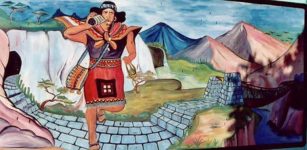 Inca Communication: Mailmen Of The Inca Empire Were Fast Roadrunners
Ancient History Facts | Mar 20, 2016
Inca Communication: Mailmen Of The Inca Empire Were Fast Roadrunners
Ancient History Facts | Mar 20, 2016




